I am interested in using Sankey diagrams, like http://bost.ocks.org/mike/sankey/
Specifically, I am using the block that enables cycles: http://bl.ocks.org/cfergus/3956043
But, each "start-node" is drawn on the far left and each "end-node" drawn on the far right. Ascii example:
|A ----> B ----> C ----> D|
|E-------------> C | <-- starts far left
|F --------------------> D| <-- starts far left
|G ----> B ------------> H| <-- finishes far right
What I prefer (in my specific case) is to keep the paths as short as possible, e.g.:
|A ----> B ----> C ----> D|
| E-----> C | <-- don't start far left
| F ----> D| <-- don't start far left
|G ----> B ----> H | <-- don't finish far right
Any d3js experts that know if this is easy to modify in the position calculation algorithm?
At the moment I manually move the nodes after they have been rendered.
from:

to:




